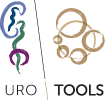In order to plan a pharmaceutical regime, the physician needs principles to support their choice of a drug and its regular us, so that they may gain experience regarding both efficacy and adverse side effects. To this end, the World Health Organization (WTO) recommends the use or a P[ersonal] Drug List. The concept of P-medication includes the active agent, the form of medication, the dosage scheme and the duration of the medication treatment. These medicines must be included in the Model List of Essential Medicines and in the National Drug Directory; They must also be approved by EOF (National Organisation for Medicines).
The procedure for Rational Drug prescription comprises 6 steps:
Step 1: Determining the patient’s problem
Step 2: Determining the object of the treatment
Step 3: Verification of the suitability of the P-treatment for the specific patient
Step 4: Onset of treatment
Step 5: Information, instructions and precautions
Step 6: Monitoring (and termination) of treatment
P[ersonal] Medications are selected following a specific procedure:
- Setting the diagnosis (Pathophysiology)
- Defining therapeutic aim
- Listing effective medications
- Selecting groups of drugs, based on scientific evidence (EBM)
- Selecting a P-medication
Four (4) criteria are taken into account: efficacy, safety, indication, cost. When there are more similar drugs, there should be preference to pharmaceutical agents which:
- have been thoroughly investigated
- have the most favorable pharmacokinetics
- are produced by reliable industrial facilities with GLP (Good Laboratory Practice) and GMP (Good Medical Practice).
- are included in the P-Medication List (that should be made by every doctor)
Literature
1. Guide to Good Prescribing: a practical manual, World Health Organization 1995.
2. D. Kouvelas, Rational Drug Prescribing and Evidence-based Pharmacotherapy, Grafima Publications, Thessaloniki 2008.


